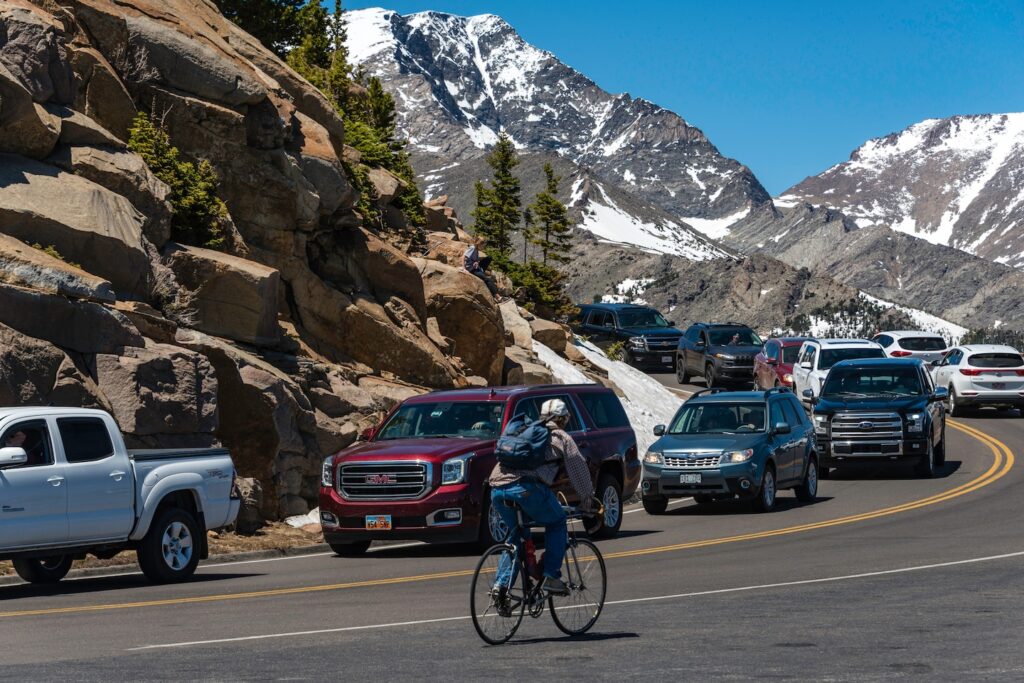Summer officially began on Thursday, with the summer solstice occurring at 4:51 p.m., the earliest it's happened since June 20, 1796. But even though the longest day of the year arrives earlier than expected, there still isn't enough time to enjoy all of the fun warm-weather activities. Case in point: visiting national parks, which are on many families' itineraries this summer but where space is limited, especially as crowds in the park system return to or exceed pre-pandemic levels.
Indeed, overcrowding is a serious problem for some of the most popular parks. Not only does overcrowding pose dangers to the park's wildlife, ecosystems, and man-made infrastructure, but the stresses of traffic jams, parking battles, and crowded hiking trails can ruin a relaxing time in the great outdoors. Park rangers sometimes spend more time directing traffic than doing tasks that actually enhance the visitor experience, such as providing interpretive talks.
But the National Park Service has been pragmatic, managing the flow of people through the parks with a timed-entry reservation system. About a dozen of the most popular destinations now require advanced reservations. Recreation.gov, the federal government's travel-planning platform, issued more than 2 million timed-entry passes, 1.5 million permits and 4 million camping reservations last year. A recent experience in California's Yosemite National Park illustrates the need: Yosemite instituted a timed-entry system to deal with a surge in outdoor recreation seekers during the pandemic, then dropped it last year, hit by traffic congestion and reinstated the reservation system this year.
The latest to join the trend is Rocky Mountain National Park, located just outside of bustling Denver. Last month, the National Park Service announced that Rocky Mountain, which is set to see more than 4 million annual visitors in 2023, up about 1 million from 2013, will make timed-entry reservations a permanent feature this summer. The aim is to spread admissions throughout the park throughout the day during the high season, which runs from late May to mid-October. The National Park Service is finally taking action after testing the concept in a three-year pilot program.
 Follow this authorEditorial Board Opinion
Follow this authorEditorial Board Opinion
Certainly, getting a permit to experience natural wonders feels counter to America’s free country ethos and the fact that those wonders are public. Rep. Ryan Zinke (R-Mont.), who served as Secretary of the Interior in the Trump administration, denounced what he called a “deliberate strategy to keep the public out of the parks.” In addition to such objections, critics of the reservation system cite practical problems. Lodge owners near the parks complain that reservations get canceled. Booking online takes away the improvisational quality of a road trip, and the process can be tedious, especially when the internet is spotty. To be sure, there are concerns about fairness in a system that favors those with access to a computer and the internet.
While the criticism may be valid, there remains an inherent trade-off between maximizing park access and maintaining park quality. A well-designed reservation system can help strike the right balance. Rocky Mountain, for example, has taken three steps to maximize visitor flexibility: The park will release 40% of the available passes for each day at 7 p.m. the day before, so as not to sell out all a month in advance. Reservations are required from 9 a.m. to 2 p.m. Finally, unusually for a federal agency, the park has committed to reviewing usage patterns annually and adjusting accordingly.
Parks could implement reservations, if possible, only for the larger facilities that are at greatest risk of being loved to death, as opposed to accessing the park in general. For example, Utah's Zion National Park is open to the public, but you need a permit, distributed by lottery, to climb the famous Angel's Landing. Similarly, you must reserve a car to drive to the top of Cadillac Mountain in Maine's Acadia National Park. And Shenandoah National Park in Virginia now requires tickets to climb Old Rag Mountain from March to November.
Parks should continue to update their rules to suit local conditions, with input from local residents. Hawaii's Haleakala National Park requires reservations to drive in to see the sunrise (3am-7am) but not to see the sunset. Arches National Park in Utah also offers a perk for those willing to rise early: tickets are only required between 7am and 4pm.
Better crowd management at popular parks could help attract more visitors to underused attractions. The America the Beautiful Pass gives unlimited access to national parks and over 2,000 federal recreation sites, only a few of which require timed-entry passes. At $80 a year, it's still a bargain even at twice the price.



